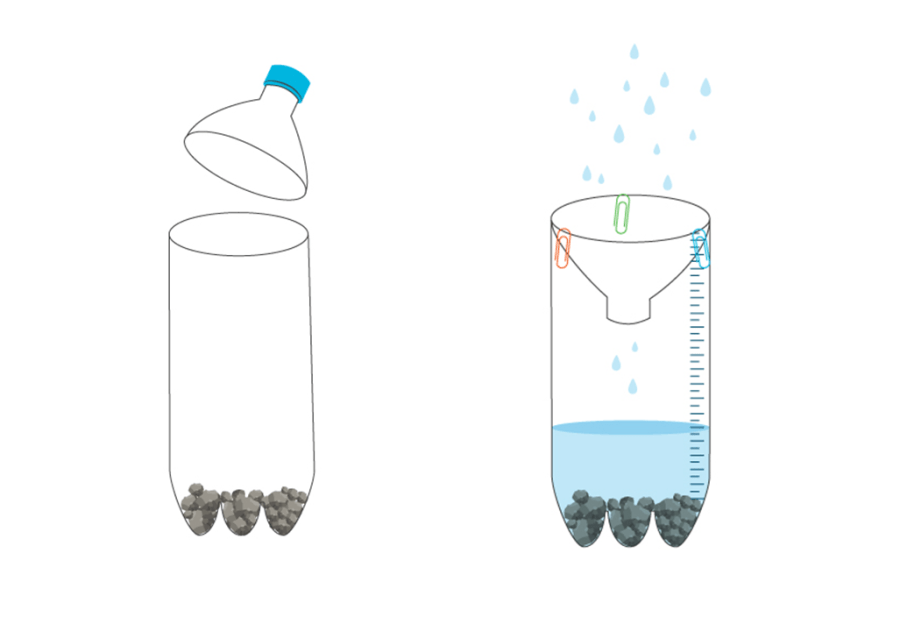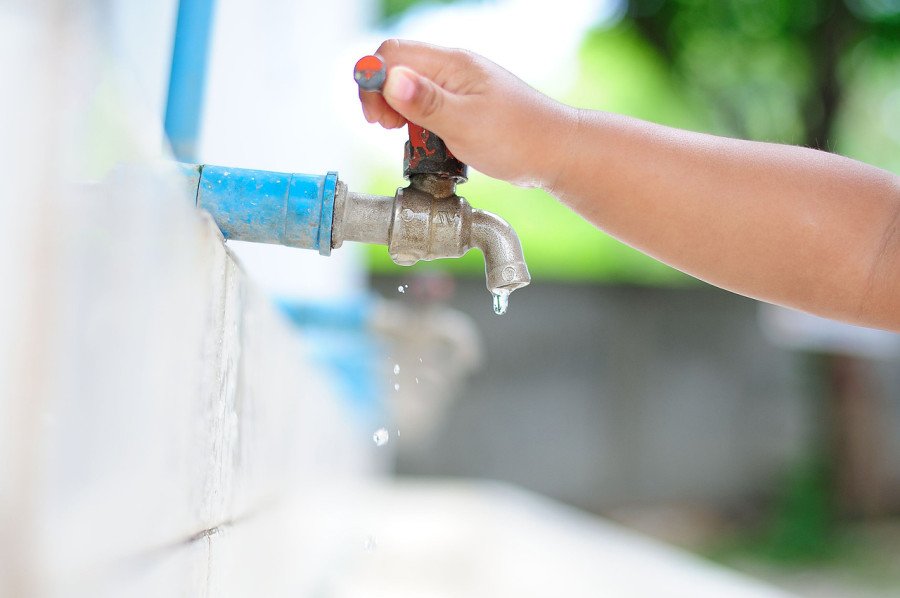Water conservation
Think about ways we use water daily, build a rain gauge, find out how much fresh water is on Earth, and make posters to encourage others to conserve.
- Grade 2
- 4 activities
- 1.6 hours
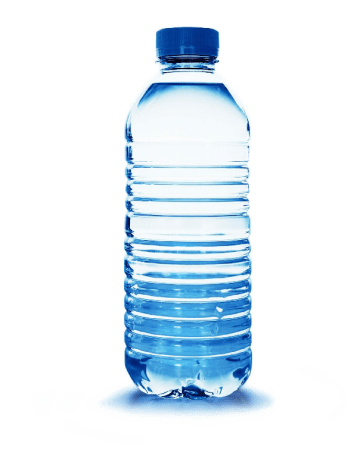
Big idea
Water is essential to all living things and it cycles through the environment.
Learning objectives
Students will be able to:
- Generate questions about water use and water sources
- Identify ways they use water in their daily lives
- Make and record measurements and observations with the rain gauge and water use at home
- Consider the environmental consequences of water use
- Generate ideas for ways to save water
- Transfer and apply their learning to water use at home
Activities
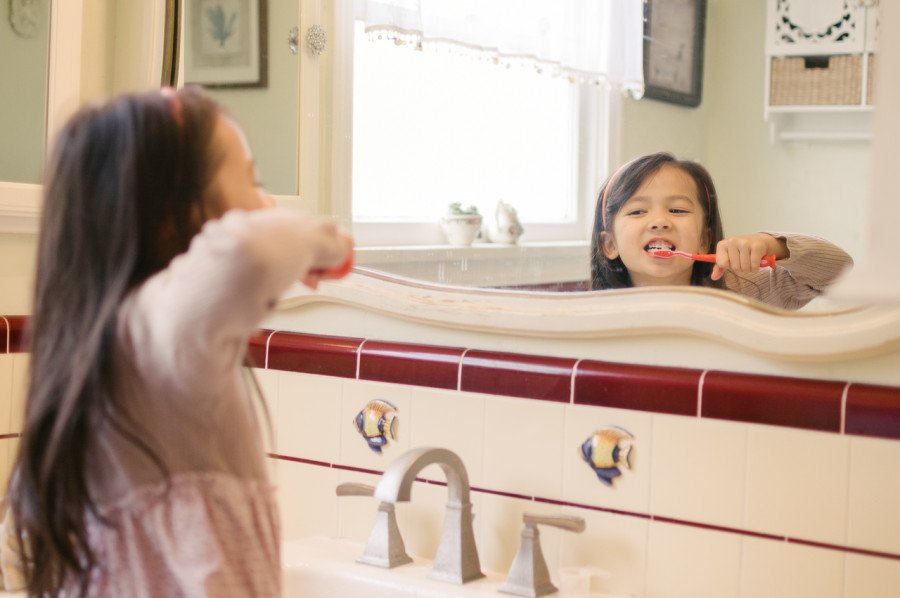
Water detectives
Search for clues about how we use water at school and at home.
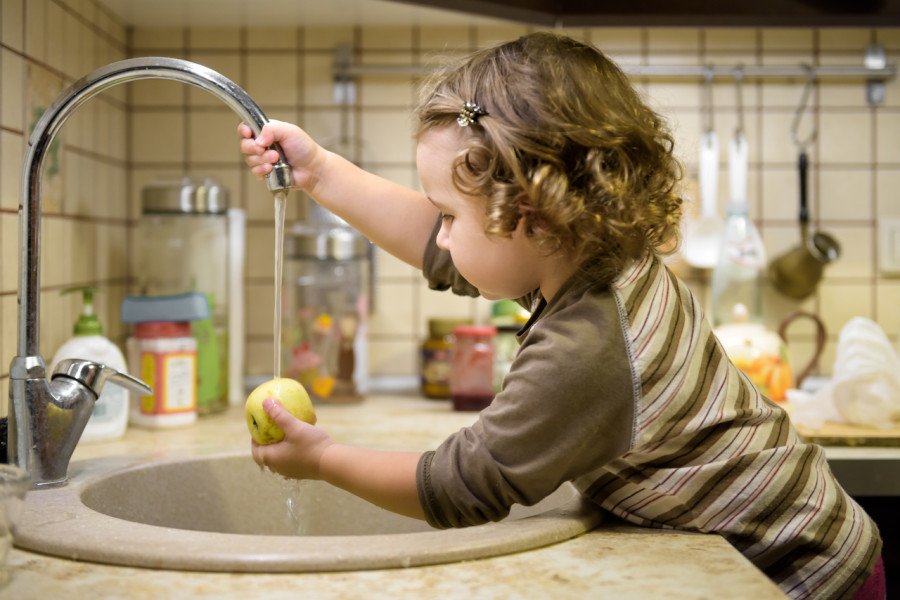
How much water is in the world?
Rain, snow, rivers and oceans – there’s a lot of water in the world. Or is there?
BC curriculum fit
Grade 2 Science
Content
- Water sources
- Water conservation
- Water cycle
Curricular competencies
Questioning and predicting
- Observe objects and events in familiar contexts
- Ask questions about familiar objects and events
Planning and conducting
- Make and record observations
- Safely manipulate materials to test ideas and predictions
- Make and record simple measurements
Processing and analyzing data and information
- Experience and interpret the local environment
- Sort and classify data and information using drawings, pictographs and provided tables
- Identify simple patterns and connections
Evaluating
- Compare observations with those of others
- Consider some environmental consequences of their actions
Applying and innovating
- Take part in caring for self, family, classroom and school through personal approaches
- Transfer and apply learning to new situations
- Generate and introduce new or refined ideas when problem solving
Communicating
- Communicate observations and ideas using oral or written language, drawing or role-play
Grade 2 Socials Studies
Content
- Rights and responsibilities of individuals regionally and globally
Curricular competencies
- Recognize the causes and consequences of events, decisions or developments
Assessments
The activities in this unit provide an opportunity to assess individual students and small groups on their ability to:
- Identify ways they use water in their daily lives
- Generate questions about water sources and water use
- Make and record measurements and observations with the rain gauge and water use at home
- Transfer their understanding of rainfall and limited freshwater resources to conserving water
- Consider the environmental consequences of water use
- Generate ideas for ways to conserve water
- Apply their learning about water conservation at home
Background info
Water in our lives
In British Columbia, we use about 300 litres of water per person per day (Statistics Canada, 2013). We use water every day to drink, flush our toilets, brush our teeth, run our baths, grow and cook our food, wash our dishes and clothes, and make our electricity. Our province has a lot of surface water in lakes and rivers, but despite this, only one per cent of water on Earth is readily accessible. When students understand how they use water, they can explore ways to reduce their water use.
Water sources
Water is important to all living things, including plants and animals. Living things depend on water for food, drinking, habitat and more. For humans, water is also used for things like washing, farming and generating electricity. Water comes from five main sources.
- Surface water includes rivers, streams and lakes.
- Groundwater is the water found in cracks and spaces in the soil and rock.
- Precipitation comes in the form of rain and snow.
- Frozen water is stored in glaciers and icefields.
- Oceans are salt water and form the majority of water on earth.
Water covers almost 80 per cent of Earth’s surface, but there is only a limited amount of fresh water available to living things, including humans.


